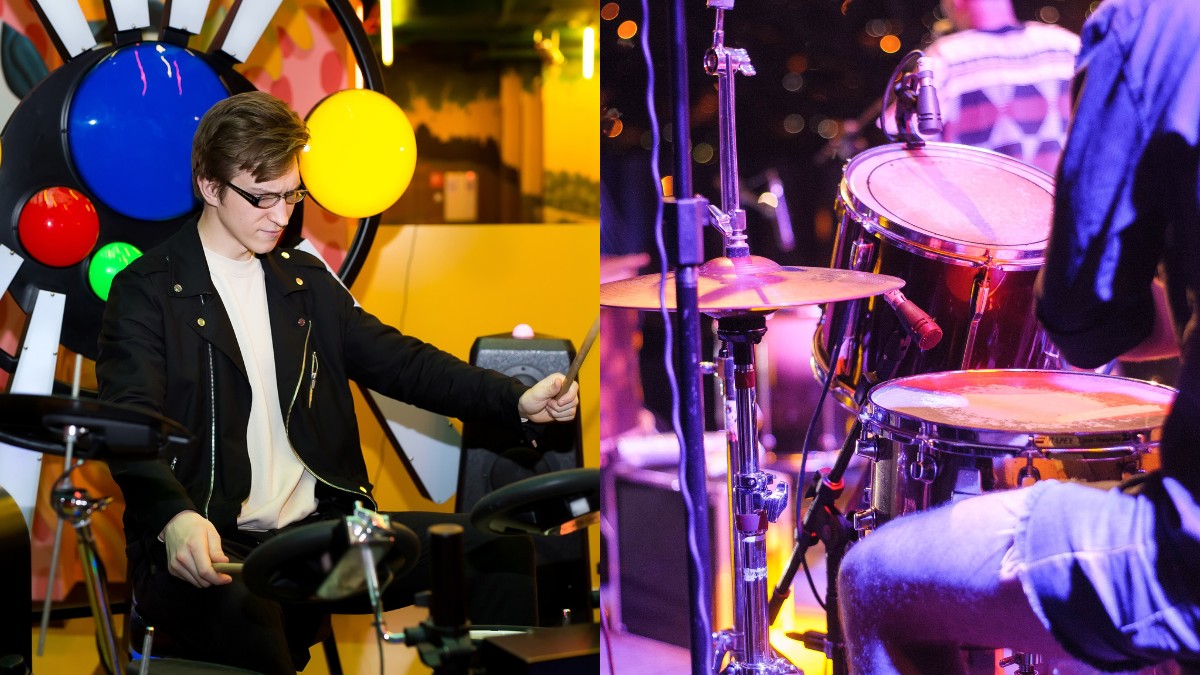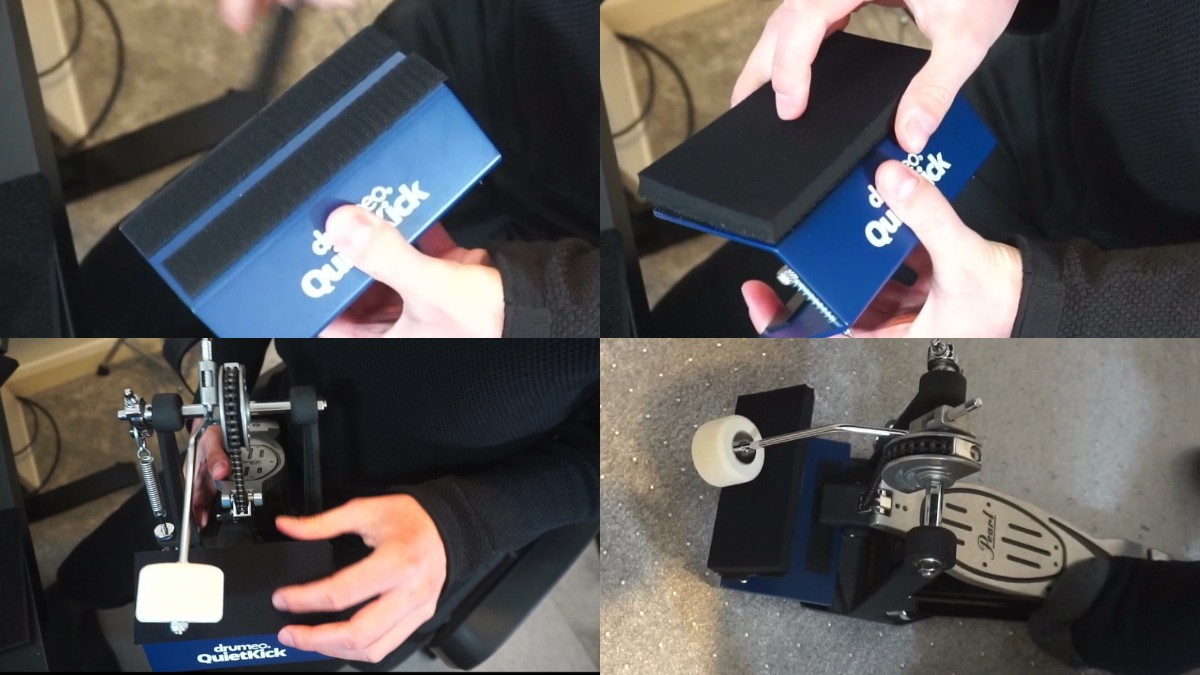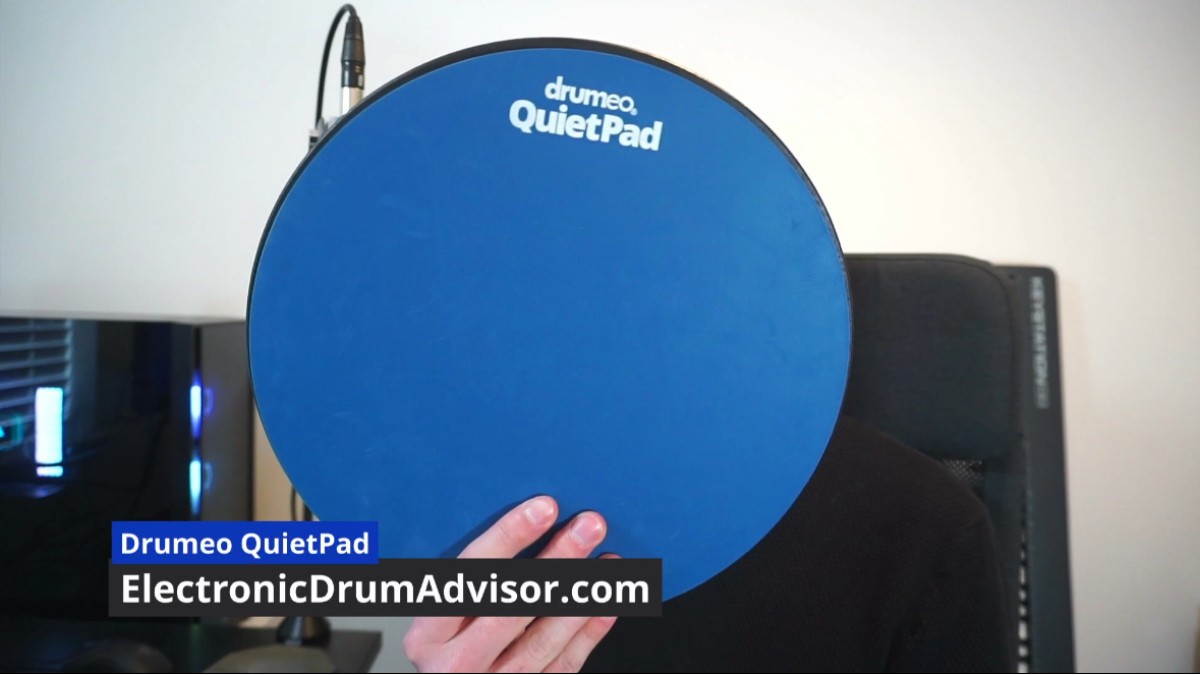Can You Play Live With Electronic Drums?

Electronic drums can definitely be used in a live setting, but going for an acoustic kit is often preferred because of its authentic sound, feel, and stage presence. However, electronic drums are still a great and easy option for certain types of shows and styles of music.
When playing live on stage, acoustic drums are generally the better choice, but there can be a lot of reasons why you are considering going for an electronic kit. Electronic drums are a lot easier to use live as you can just hook them into the PA system. Also, they offer a more diverse range of sounds that traditional acoustic kits can’t reproduce.
You can also consider going the hybrid route where you can incorporate some electronic drum components like a drum module and trigger pads into your existing kit to get the best of both worlds. If this is the route you’d like to go then consider reading our article on the ultimate guide to hybrid drums.
But if that may not be the reason why you want to go with electronic drums, then stick around because in this article I will explore the advantages of using electronic drums for live performances, how to set them up, tips for playing live, and examples of successful live performances with electronic drums.
Contents
1. Advantages of using electronic drums for live performances
Versatility and sound options
While a lot of musicians tend to agree that acoustic drums are superior to electronic drums in terms of sound quality, electronic drums are still a great choice because they offer a wide range of sound options to choose from. Unlike acoustic drums, electronic drums can provide you with many different drum kits and percussion sounds all in one setup, which is perfect for playing various styles and genres during a live performance.
If you want to learn more about their differences, check out our article about acoustic vs. electronic drums.
Portability and compactness
This aspect of electronic drums is what makes them superior to acoustic drums. Electronic drums are super easy to take with you wherever you go! They are lightweight and compact, making them perfect for musicians who are always on the move. Plus, they don’t take up too much space on stage, which is great for smaller venues or when you’re sharing the stage with other bands.
Volume
This can be a good thing or a bad thing. If you’re after a kit that can hype up a crowd then going for an acoustic set would be a no-brainer. But if you want to control your noise levels, going electronic is a wise decision.
Electronic drums make it simple to adjust the volume making it especially helpful in smaller venues or places with noise constraints. Electronic drums are also popular among drummers who need to practice quietly because they can be used with headphones (read our article on electronic drum headphones for more information).
You can get a more punchy sound with an electronic kit
Using an electronic kit can provide a punchier sound than an acoustic kit on stage without spending a lot of time dialing in the right sound. For example, if your style requires a heavily compressed kick sound then it’s a lot easier do this using electronic samples than doing it using an acoustic kick drum.
Easy integration with other electronic equipment
While you can also integrate acoustic drum sets into electronic equipment, this is another area in which electronic drums excel at simply because you need additional accessories for acoustic kits to achieve the same thing most electronic kits can do out of the box.
Electronic drums are built to work well with other electronic equipment like sound systems, recording devices, and computers. This means you can easily connect your electronic drum kit to a mixer or PA system for live performances, or use MIDI to record your drumming, and jam along to your favorite songs.
We’ve also got an article on how to record electronic drums if you want to learn more.
2. Setting Up Electronic Drums for live performances
Choosing the right electronic drum kit
When selecting an electronic drum kit for live performances, it’s essential to consider your budget and the features you need. Research various kit options and read reviews to find the best electronic drum set for your needs (you can find some recommendations in our best electronic drum set article).
Connecting to a sound system
To connect your electronic drum kit to a sound system, you can use direct inputs or a DI box. Connect the drum module’s output to a mixer or PA system, ensuring that the signal is balanced and free from interference.
Balancing volume levels
When you’re about to perform live with your electronic drum kit, it’s super important to do a sound check to make sure everything sounds good. You can make it just as loud as acoustic drums (depending on your gear), or you can adjust it to be as balanced as you want. If you need to, you can also tweak the volume levels of each pad and cymbal to make sure everything sounds awesome and even.
3. Tips for playing electronic drums live
Practice with the electronic kit
To perform confidently with electronic drums, it’s essential to familiarize yourself with the kit’s features and settings. Spend time practicing with the electronic kit to develop muscle memory for pad and cymbal locations.
Use a monitor or in-ear monitors
To ensure you can hear yourself and other band members during a live performance, use a monitor or in-ear monitors (learn more about the best in-ear monitors for drummers). Adjust the monitor levels to achieve an optimal mix, allowing you to play confidently and in time with the rest of the band.
Be mindful of playing dynamics
Electronic drums may have different sensitivity levels than acoustic drums, so it’s essential to be mindful of your playing dynamics. Adjust your playing technique if necessary to ensure consistent and expressive performance.
Have a backup plan
As with any live performance, it’s crucial to have a backup plan in case of technical issues. Bring spare cables, power supplies, and batteries, and familiarize yourself with troubleshooting common problems with electronic drums.
4. Examples of successful live performances with electronic drums
Bands and artists who use electronic drums live
Many bands and artists successfully incorporate electronic drums into their live performances. Examples include Genesis, Rush, and The Weekend, all of whom have used electronic drums to create innovative and engaging live shows. And you can achieve this too! By incorporating the right sounds you can create an iconic tone that makes you stand out from the crowd!
Notable live performances
Some notable live performances featuring electronic drums include Imogen Heap’s innovative live looping shows, Afishal’s live DJ shows, and Neil Peart’s Drum solo in a Rush concert in Frankfurt. These performances demonstrate the versatility and creative potential of electronic drums in a live setting.
Conclusion
So, to wrap things up, while acoustic kits are the go-to for stage use, electronic drums are still a super versatile and portable option for drummers of all levels when it comes to playing live gigs.
By following the tips in this article, you’ll be well on your way to nailing a great performance with electronic drums. And let’s not forget about their many advantages, like sound versatility, portability, and easy integration with other electronic gear.
Some big-name bands and musicians have already proven that electronic drums can rock a live show and add a whole new level of creativity to their performances. So why not give them a shot and see what you can do?







